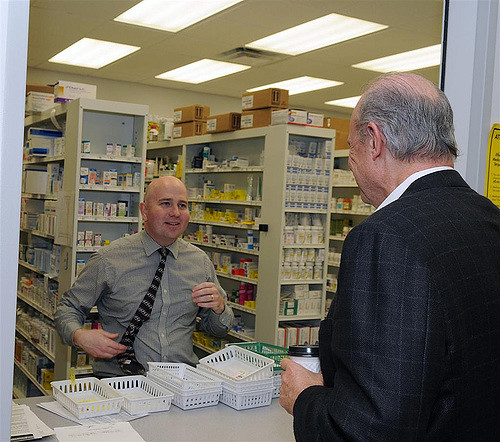What Happened to This Woman is Why You Should Pay Attention to Your Prescription

By:
Khaliah Shaw's skin melted from the inside out, and she'll soon go blind.
The 26-year-old who resides in Snellville, Georgia, alleges in a lawsuit that she developed Stevens Johnson Syndrome, a rare skin disease, three years ago after a pharmacy dispensed the wrong dose of Lamictal (Lamotrigine), which she was prescribed to treat her depression.
"This did not have to happen," Shaw told NBC 11. "This was not just some sort of fluke in my opinion. This happened as a direct result of somebody's error."
Though the skin disease is rare, medication errors are not. In fact, these incidents are rising at an "alarming rate," according to a NBC 11 investigative report. There were about 17,000 medication errors in 2010 and almost 94,000 errors in 2016, according to data from the Food and Drug Administration (FDA).
That's a 462 percent increase — and it likely underestimates the frequency of these errors because it's based on self-reported claims. Each year, medication errors injure 1.3 million Americans and kill one patient every day.
Shaw's story should serve as a reminder to patients, who can take steps to avoid these mistakes, says Dr. Jodi Segal, a professor of medicine at Johns Hopkins University.
 Khaliah Shaw Facebook - facebook.com
Khaliah Shaw Facebook - facebook.com
"Everybody is asked when they pick up their medicine, 'Would you like to talk to the pharmacist?'" Segal told ATTN:. "If patients are uncertain at all about what's written on their medication bottle, they should take the pharmacist up on that option."
"That's what they're there for. That's what they want to do. They're clinicians — they're committed to helping patients get well."
From the time a doctor writes a prescription to the time it's filled at a pharmacy, there's a lot that can go wrong, a 2006 report from the Institute of Medicine found. Dr. Albert Wu, the lead author of the report, described the complications in an interview with Johns Hopkins Bloomberg School of Public Health:
"A medication error is a breakdown or failure at any point in the medication use process: the long chain of events that is necessary for a medication to be prescribed and used effectively by a patient. There could be problems in choosing the drug prescribed, in ordering the drug, dispensing it, administering it, or monitoring the drug once it’s taken. There could also be problems when the patient does not take the drug as directed."
Part of the problem could be that pharmacists often work in demanding environments, filling hundreds of prescriptions each day.
 Flickr - staticflickr.com
Flickr - staticflickr.com
Some experts have called for rules that limit the number of prescriptions a pharmacist would be allowed to fill in a shift, arguing that pressure to dispense hundreds in a given day will inevitably lead to medication errors.
"If you’re filling [300] or 400 prescriptions by yourself, that’s clearly way too much for one pharmacist," Matt Perri, a pharmacy professor at the University of Georgia, told NBC 11. "The idea of setting limits is unappealing on the business perspective, but on a patient safety perspective, it would be a good thing if we had a general idea of where those limits were."
While it might be an unpopular proposal from a business standpoint, it'd represent a step in the right direction in reducing medication errors — a dangerous issue that's apparently more common than most patients might think.
"Be an advocate for yourself," Shaw said to NBC 11. "Educate before you medicate."
